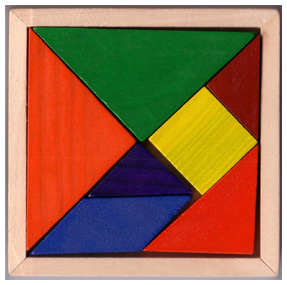 Construction companies can easily run into problems when they hire the wrong people. Not only is it a money problem, but it also affects productivity and safety. Replacing someone restarts the hiring cycle, taking time and energy away from more productive work. To avoid costly hiring mistakes many companies have moved from reliance on educated guessing to better selection processes. They have done that because according to the National Center For Construction Education and Research (NCCER):
Construction companies can easily run into problems when they hire the wrong people. Not only is it a money problem, but it also affects productivity and safety. Replacing someone restarts the hiring cycle, taking time and energy away from more productive work. To avoid costly hiring mistakes many companies have moved from reliance on educated guessing to better selection processes. They have done that because according to the National Center For Construction Education and Research (NCCER):
- Traditional hiring methods (resume, interview and background checks) only provide a 14% likelihood of a successful hiring decision.
- The cost of employee turnover can range from one half to four times the employer’s annual salary and benefits.
- People are good at convincing hiring managers that they are right for the job even when they know they might not be.
- Many times you won’t realize you’ve made a poor hiring decision until the team member has already become an emotional part of your team.
- With the right tools and know-how you can improve the chances of hiring success by as much as 75%.
I found an inexpensive way to evaluate staff and prospective talent using puzzles to address workforce development and performance issues. You can learn a lot about a person by watching him work puzzles. Some people do crosswords, others Sudoku. My puzzle of choice is the Tangram.
A tangram can tell you in less than 10 minutes if you have a potential winner or a dud on your team. How a potential employee approaches the puzzle tells a lot about their personality and their problem solving ability which is critical on a construction project.
According to Wikipedia, “The tangram is a dissection puzzle consisting of seven flat shapes, called tans, which are put together to form shapes. The objective of the puzzle is to form a specific shape (given only an outline or silhouette) using all seven pieces, which may not overlap. It was originally invented in China and then carried over to Europe by trading ships in the early 19th century. It became very popular in Europe for a time and resurfaced during World War I. It is one of the most popular dissection puzzles in the world. In China, the game was used to evaluate a person's intelligence. The game has been called ‘the earliest psychological test in the world’ albeit one made for entertainment rather than analysis. The puzzle can be solved through different methods, and thus could be used to assess a person's flexibility and creativity of thinking.”
Watching someone turn 50 shades of whatever as they attempt to work a seemingly easy, but extremely hard puzzle is very telling. Some figure it out quickly, others don’t. I’ve had trainees and applicants refuse to do it, work on it briefly only to walk away due to frustration, or sit for hours until they solve it. What’s more compelling is observing group situations where participants self-select who takes the lead, follows, or falls by the wayside while puzzle building.
Solving Tangram puzzles can identify telltale signs of a person’s fortitude, flexibility and problem solving skills which are essential for solid job performance and retention. In our firm, there are four personality types we look for in our applicants:
- Optimists, who think the glass is half full, are people who always look for a favorable outcome and look for alternative problem solving solutions to meet their objectives. This applicant usually sticks with the puzzle until it is solved.
- Realists perceive the glass as half empty. They accept things as they are and approach problem solving pragmatically.
- Pleasers are hesitant to make a decision and might not be able to solve the puzzle at all.
- Belligerents are those who just doesn’t care. They give up and leave the room.
Candidates who display Realist or Optimist tendencies are normally good hires because of a natural tendency to complement each other. Pleasers are difficult to gauge and are very risky to hire. Belligerent tendencies are good if they are able to justify their actions to the group. If not, nothing good will come out of hiring them.
When used with existing teams, working with tangrams can help easily identify and separate personality types, allowing group leaders to quickly assess and place people in the right positions with the right responsibilities on the job site. They can also be used to identify weaknesses, modify behavior, and shore up poor performers. I have found that the Realist is likely to become the group leader, assisted by the Optimist, who typically works to incorporate different strategies and buy-in from the other two personality types. Both have to monitor the Pleaser to give reassurance that their decisions fit within the group dynamic, while the Belligerent person may offer some advice, but typically chooses not to participate. The challenge is to build trust among the four personalities where all opinions are respected and all options are explored to maximize participation.
I have learned more about my team, myself and how to manage better by maneuvering these seven small geometric shapes than by taking any written personality tests. Check out this tangram website. I suggest your management team try it and give me a shout. You will be amazed at what you find out about yourself, your team, and the potential team members you interview.



Add new comment